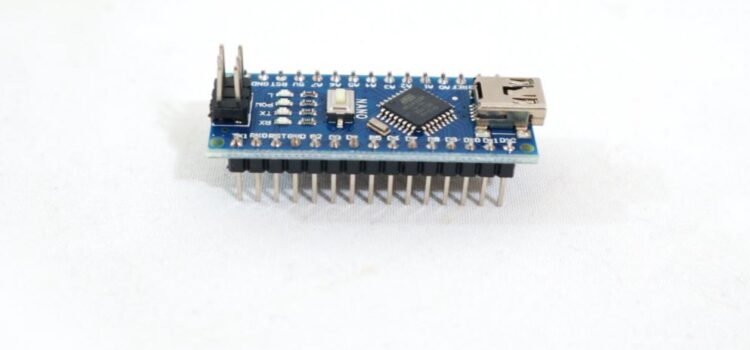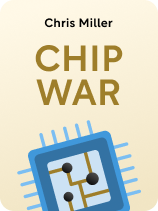
Who invented the semiconductor chip? And who invented the transistor?
The semiconductor chip was invented by Jack Kilby at Texas Instruments in 1958, building on William Shockley’s invention of the transistor in 1947 at Bell Labs. However, there’s more to the story than these individual inventors, and a deeper dive into these inventions shows that there were more players involved.
Learn more about the beginnings of the semiconductor chip with this history of invention.
Beginnings of the Semiconductor Chip
Semiconductors are materials that have electrical conductivity between that of a conductor (a material that allows the flow of electrons with minimal resistance) and an insulator (a material that blocks the flow of electrons). They’re crucial components in electronics, as their unique electrical properties can be manipulated to control the flow of electric current. So who invented the semiconductor chip? The story begins with the transistor.
In 1947, William Shockley, an employee at Bell Labs, found that by having metal contacts make physical connections with semiconductors, he could create a transistor—a kind of electrical switch that could be turned on or off to regulate or amplify the flow of electricity in electronic circuits.
(Shortform note: William Shockley had some controversies with his coworkers over credit for the invention of the transistor. Some sources note that, while Shockley played a role in the theoretical understanding of semiconductors, he came into the project after the initial breakthrough by his colleagues John Bardeen and Walter Brattain. Shockley, however, insisted on being included in the credit for the invention—even though his name wasn’t even on the original patent.)
Vacuum tubes were bulky, prone to malfunction, and physically large, limiting their potential, particularly in military contexts. Transistors, on the other hand, were significantly smaller, lighter, and more efficient and durable.
(Shortform note: While transistors have largely replaced vacuum tubes in most electronic applications due to their smaller size, lower power consumption, and reliability, vacuum tubes still find use in certain niche applications. One notable area where vacuum tubes are still used is in high-power amplification, such as in high-fidelity audio amplifiers and guitar amplifiers. Vacuum tubes can provide a warm and natural sound that’s favored by audiophiles and musicians. Vacuum tubes are also employed in radio frequency (RF) and microwave devices like cell phones and Wi-Fi routers, where they can generate high-frequency signals and high-power microwave radiation more efficiently than transistors.)
In 1955, William Shockley founded the company Shockley Semiconductor in Palo Alto, California. In 1958, details Miller, some of Shockley’s engineers left, founding Fairchild Semiconductor, which would go on to eclipse Shockley Semiconductor in the emerging semiconductor space.
(Shortform note: Miller notes that Shockley’s engineers chafed under his authoritarian management style and passion for racist eugenics theories. Some commentators have gone even further, branding Shockley as the original, prototypical misguided Silicon Valley founder. According to this view, Shockley’s erratic and confrontational style was a harbinger of the provocative actions of later tech entrepreneurs, including Elon Musk of Tesla. Shockley’s idiosyncratic behaviors—such as submitting recruits to rigorous psychological tests—and his alienating behavior (including his penchant for practical jokes and trolling) seem to be an early example of the shortcomings seen in some Silicon Valley figures today.)
In 1958, Jack Kilby at Texas Instruments (TI) invented the integrated circuit, known today as the “chip.” These contained multiple transistors fabricated onto a single physical “chip” of semiconductor material (usually silicon). Chips took semiconductors to the next level, offering lower power consumption (and thus greater efficiency and durability) and enabling more compact designs.
| Who Deserves Credit for the Integrated Circuit? Kilby was awarded the Nobel Prize in Physics in 2000 for his contribution to the invention of the integrated circuit. However, the Nobel Committee’s decision was met with some controversy and criticism. Some argued that Kilby’s work was not as well-known or as groundbreaking as that of other scientists, like Robert Noyce, who had also made significant contributions to the development of the microchip. Noyce, a cofounder of Intel, had independently developed a similar integrated circuit around the same time as Kilby. Noyce’s version, known as the planar integrated circuit, had some advantages over Kilby’s design and became more widely adopted in the industry. |

———End of Preview———
Like what you just read? Read the rest of the world's best book summary and analysis of Chris Miller's "Chip War" at Shortform.
Here's what you'll find in our full Chip War summary:
- The history and rise of the semiconductor industry in the US and abroad
- How national security became intertwined in the chip industry
- How a spurned TI employee grew the chip industry in Taiwan






